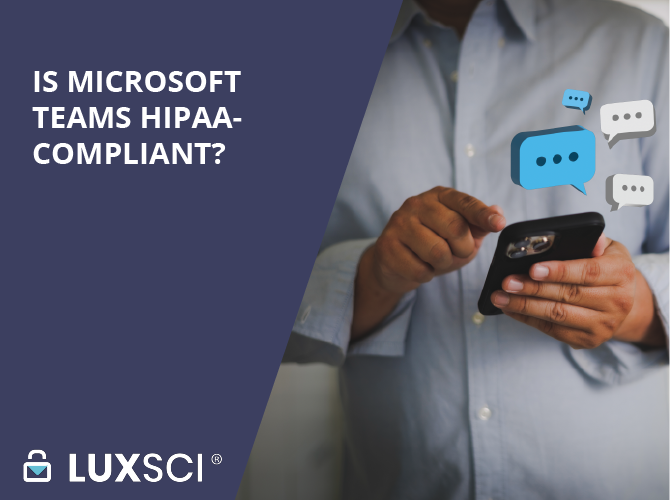Is Microsoft Teams HIPAA-Compliant?
Tuesday, July 12th, 2022Microsoft Teams is a unified communication platform with workplace chat, video conferencing, and file-sharing tools. It’s a popular program for internal workplace communications. However, healthcare organizations may wonder if they can use it while complying with HIPAA.
Microsoft Teams is designed to work with Microsoft 365 and additional Microsoft products. As readers of this blog may know, Microsoft 365 email products can be used in a HIPAA-compliant manner, but they require additional security configurations to meet compliance requirements. In the same way, organizations must take additional steps to secure Microsoft Teams.
Business Associate Agreement
As we have discussed before, a business associate agreement (BAA) is required for any vendor that will process ePHI on a company’s behalf. These agreements outline how ePHI will be used, what control measures will be in place, and where the responsibilities lie between the parties.
BAAs are absolutely necessary for HIPAA compliance. Even if Microsoft Teams is correctly configured with the necessary security controls, it would still violate HIPAA if a signed BAA was not in place. If an organization already has a BAA with Microsoft, they should confirm that using Teams is allowed before implementing it. This means that free Microsoft Teams accounts are not HIPAA-compliant.
Configure Security Settings
As mentioned above, using Microsoft Teams in a HIPAA-compliant manner involves more than signing the BAA and downloading the application. The organization must comply with the HIPAA Security Rule, which involves:
- Ensuring the confidentiality, integrity, and availability of all electronic PHI.
- Detecting and safeguarding against anticipated threats to the security of the information.
- Protecting against anticipated, impermissible uses or disclosures.
- Certifying compliance by the workforce.
Covered entities are responsible for putting the proper controls and reporting mechanisms in place to protect PHI. That includes employing the various safeguards available in the Microsoft Teams platform, such as:
- Implementing user access controls
- Requiring multifactor authentication and single sign-on (SSO) for user logins
- Encrypting data in transit and at rest
- Tracking and investigating specific activities using audit logs
Note that some features of Microsoft Teams may not be available when the platform is configured for compliance. It’s up to an organization’s IT and compliance teams to implement and enforce the proper technical controls.
Create Policies and Educate Users
Just because Microsoft Teams can be used to transmit ePHI, it doesn’t mean that’s always the best choice. Administrators should create policies that discuss how and when ePHI can be transmitted through Teams. For example, to reduce risk, it may be wise to keep heavy ePHI items like lab results out of the messaging application.
In addition, organizations should determine which devices employees can use Teams on. If allowed to install Teams on their personal devices, the IT and compliance teams must develop policies and institute controls that can remotely wipe and disable personal devices if lost or stolen to prevent unauthorized ePHI access.
Microsoft Teams can make intra-office communication much more straightforward, but it’s essential to determine what is and isn’t allowed before rolling it out to employees. EPHI is very nuanced, and to protect data, it’s essential to thoroughly understand the risks involved with a new communications platform.





